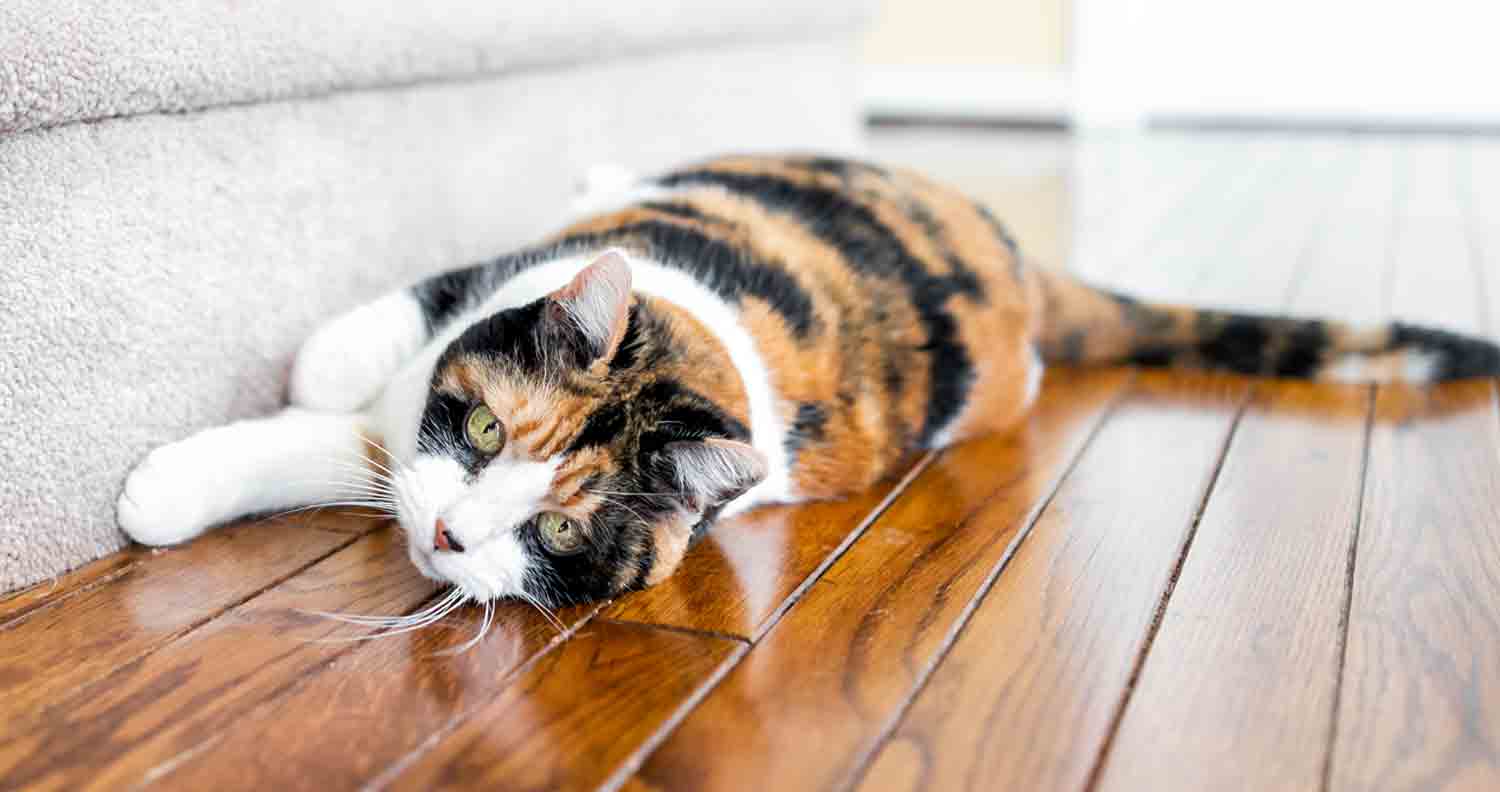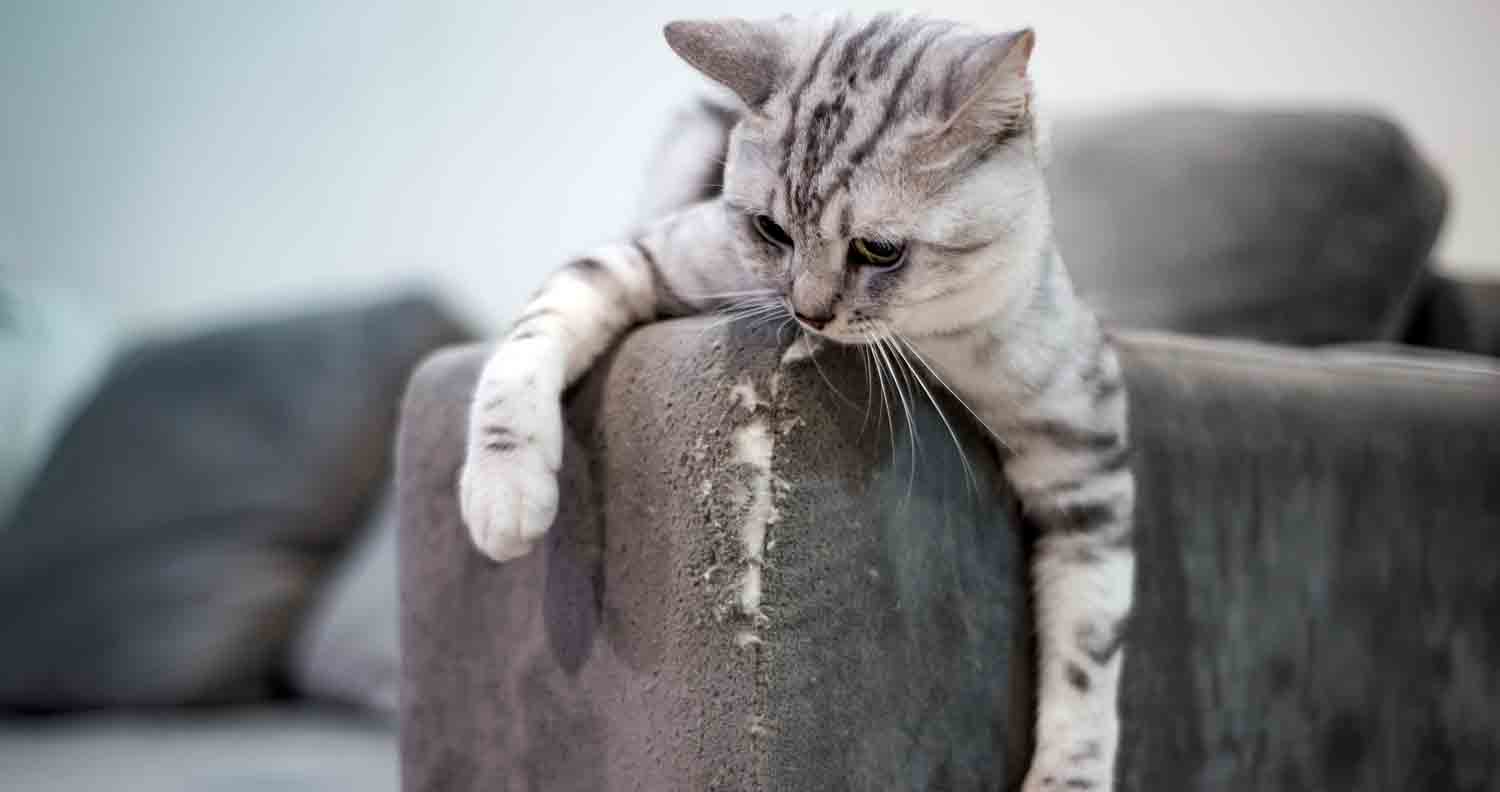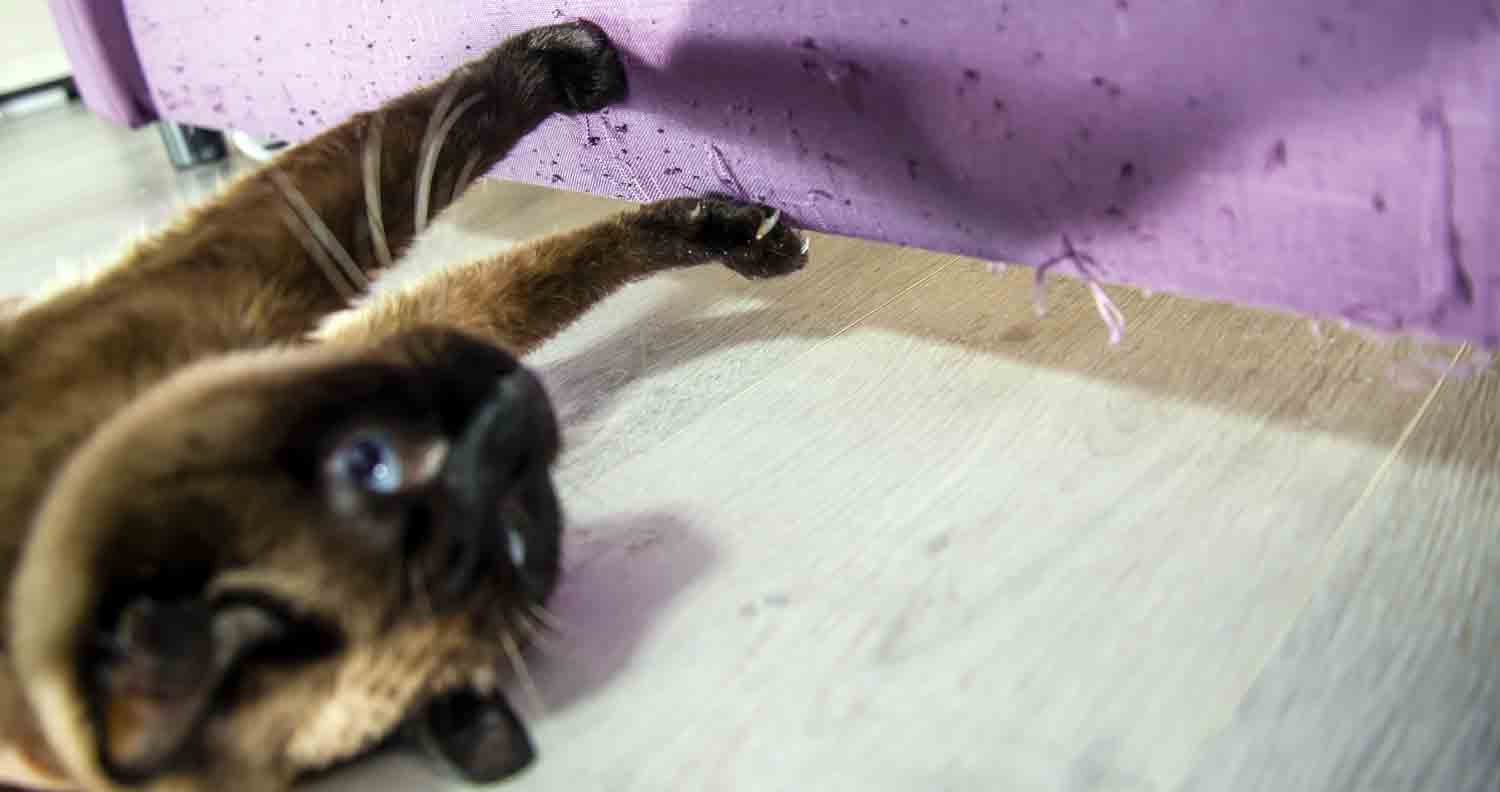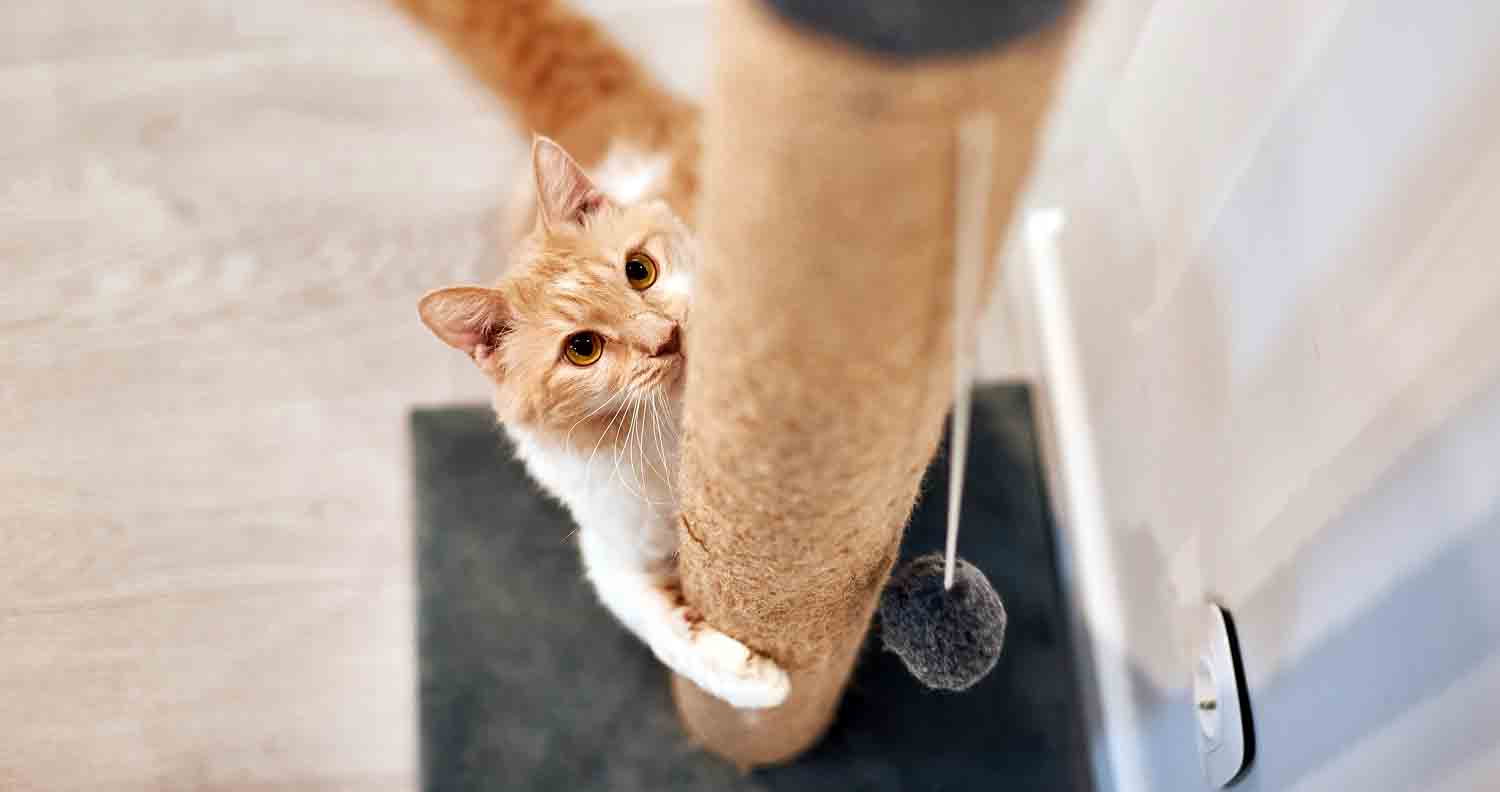How To Stop Cats From Scratching Furniture
Share:

Cat’s scratch. It’s a natural part of their behavior, and something they’re always going to do, no matter how hard you may try to keep scratching to a minimum. Ultimately, if you’re going to be a cat parent, you need to accept the fact your cat is going to scratch. But how? And how do you keep your cat from scratching furniture in the long run?
However, this doesn’t mean you can’t take steps to dictate where your kitty is going to do their scratching. Investing in the right scratch-ready furniture, encouraging your cat to use their energy productively, and tackling issues like anxiety can all help to make scratching less problematic.
Today, we’re going to cover the complete guide on how to stop cats from scratching furniture while still ensuring they live a happy, healthy life.
Why do cats scratch furniture?
Let’s start with the basics – why do your cats scratch your couch?
Scratching is perfectly normal behavior for a cat, designed to help them loosen and remove the outer section (husk) of the claw, to keep their nails sharp. Scratching is an important way for kitties to exercise the muscles in their legs and feet, as well as a valuable tool for improving spine health.
Many cats even use scratching as a way of minimizing stress and anxiety. Some of the most common reasons your cats will scratch your furniture (or anywhere else) include:

How to Stop a Cat from Scratching Furniture?
If your cat develops a habit of scratching your furniture or carpets, it can take a while and some creativity to get them to stop. The first and most important thing any cat owner can do is ensure there are appropriate places for cats to scratch. Providing your kitty with alternative surfaces and scratching pads they can comfortably scratch without destroying anything is crucial.
Keep in mind, cats like to scratch on rigid surfaces which resist the pull of their claws, as this helps with stretching. It’s also important that your cat can stretch their bodies out while scratching, so long or tall scratching posts are generally a good idea.
Look into cat scratching boards, cat condos, and scratching posts whenever possible. These are readily available in all pet shops and online stores. They also tend to be made of wood and heavy-duty cardboard, as well as covered in materials like sisal string. You can also buy multi-level pieces of cat furniture which help your cat to scratch, climb, and explore.
If you have limited space in your flat, home, or apartment, there are flat panels with a rough surface you can attach to walls. There are various versions available to buy, or you can make products yourself in some cases, using sisal.
How to choose the best scratching post for your cat:
When wondering where to get started with cat furniture specifically designed for scratching, it’s worth taking a closer look at where your cat is already scratching. If your kitty generally does a lot of scratching on your carpet, you could consider flat scratching boards. If your cat likes to climb and scratch at your curtains or wallpaper, a scratching post with multiple levels may be best.

Get 30% off and FREE shipping on cat food!
U.S.A. only
To Find out why we recommend chewy.com, click here
Think about:
Don’t forget you can also get various kinds of scratching posts and boards to suit the style of your home too. There are various fashionable options out there.
How to Get Cats to Scratch Elsewhere
Once you’ve purchased your scratching post, make sure you’re placing it in the right location. If your cat spends a lot of time in a specific space or tends to scratch more often in one part of your home, this tends to be where you should place your scratching posts.
Remember, cats are naturally curious creatures, but they don’t like to be forced into doing anything. Don’t try to keep pushing your cat’s paws against the scratching post until something happens, or you’ll end up just making them annoyed. Be patient and allow your cat to approach the scratching space on its own.
If you’re keen to speed up the adoption of the new post, it can be helpful to apply some catnip or spray pheromones to the cat scratching post to grab your cat’s attention. You can also consider using a string or a dangling toy to entice your kitty over to the scratching post. Many of the best scratching posts available today have these pre-attached.
Keep in mind, your scratching post should also be in a place that feels secure and safe for your cat. In other words, avoid placing any posts or boards in an area with a lot of foot traffic, as this will disturb your cat when they’re trying to relax around the scratching post.
What if Scratching Posts Don’t Stop the Behaviour?
If you try adding a scratching post or two to the house and the scratching behavior still doesn’t stop, there are a few other things you can do to deter your furry friend.
For instance, clean the damaged area thoroughly. This will help to remove some of the lingering pheromones and scents luring your kitty back to the same place. Try hoovering any excess fur from around the area too. There are various special scratching deterrent sprays and coatings on the market you can use to prevent further damage to certain areas.
Keep in mind, these deterrent sprays can come with quite a strong smell, which is just as unappealing to humans as it is to cats. You also need to apply the spray regularly to ensure they remain effective. Other options include:

Cutting your Cats Claws: The Right Way
If you’re struggling to prevent your cat from scratching your furniture, you might be able to reduce the damage they do by trimming their claws. Notably, this is not the same as declawing your cats, which is something you should never do!
Declawing a cat is a surgical process that involves removing the claw and end bone of each toe. It’s an amputation and something which actually causes long-term pain and discomfort for your cats. It’s also worth noting declaw cats are often more likely to have litter problems and act aggressively because of their issues with their paws.
Though you might be a little frustrated by your cat clawing, remember paws and claws are essential tools for cats, and it’s extremely dangerous to harm your cat by declawing them. If you want to clip your cat’s nails safely and humanely, you can follow these tips:

What If You Can’t Trim Your Cat’s Nails?
If clipping your kittens' nails turns out to be a serious challenge, there are a few things you can try. Sticky paws for furniture could be a good option, as the glue on this double-sided tape is designed to be safe for both your furniture and cat.
Another option to keep your cat from scratching the furniture is soft paws or soft claws – which are kinds of cat nail caps that go over the top of your cat’s nails. These can stop your cats from scratching as aggressively, without harming your cat’s nails, or preventing them from stretching their claws as they need to. The biggest problem with these tools is they will naturally grow away from your cat’s claw over several weeks. You may also find it very difficult to replace the claw caps yourself.
In some cases, you may be able to ask a cat groomer to help you with nail caps if you think clipping your cat’s claws regularly is going to be too much of an issue. Your groomer can also help with the clipping part and will usually trim your cat's claws before applying any caps.
Understanding Scratching from your Cat
It’s important to remember that your cat is naturally designed to scratch all kinds of surfaces and furniture. With that in mind, you really can’t expect to stop scratching entirely as a pet parent. The best you can do is try to direct your cat’s behavior in the best way possible.
The commitment of becoming a cat guardian means recognizing unwanted behavior and working with your cat to overcome those issues. Try not to shout or scream at your cat when they’re clawing places you don’t want them to scratch. Most cats simply don’t respond to negative reinforcement, and yelling at them can cause significant anxiety.
Anxiety can also be a cause of scratching on its own. If your kitty suddenly starts being more destructive than normal, this could be a sign your feline friend is distressed. Consider looking out for other signs of anxious behavior as an indicator you may need to speak to your vet. If your cat’s scratching is anxiety-related, you can usually work with your vet to do something about it.

Get 30% off and FREE shipping on cat supplies!
U.S.A only
To Find out why we recommend chewy.com, click here
Affiliate disclosure : We Love Cats and Kittens is a participant in several affiliate programs including the Amazon Services LLC Associates Program, and the Chewy affiliate program. These are affiliate advertising programs designed to provide a means for sites to earn advertising fees by advertising and linking to products on their sites. If you click on links in our blog posts and articles we may be paid a commission.
Share:

